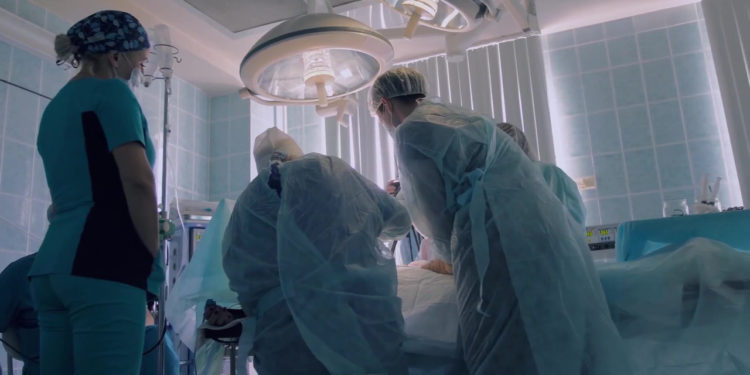AUSTIN (KXAN) – There were no signs Fulton Smith’s
life would change so suddenly. “I went to sit down with a cup of coffee, and
someone hit me in the chest with a baseball bat,” Fulton said. “Being a man, I
said maybe it’s indigestion or heart burn or something.” A series of thoracic
aortic aneurysms had ruptured inside the 69-year-old Vietnam veteran’s chest.
An aneurysm is when a bulge forms in an artery, caused by the weakening of the artery wall. When they rupture, blood pools inside the body. An aortic aneurysm occurs near the heart.
Smith’s wife quickly rushed him to the ER in Bastrop, where he was
then airlifted to St. David’s Medical Center in south Austin. The aneurysm had
caused the sack around his heart to fill with blood. “My head had turned
purple. My organs had started to shut down and (the doctor) said I had about
thirty minutes left (to live),” Smith said.
Doctors quickly drained the blood from the sack around his heart,
allowing it to beat freely again. However, the rupture needed to be repaired
quickly. To do that, doctors needed to perform surgery. “All I remember saying
to (the doctor) was,” Mr. Smith said, “Doc, no blood, do the best you can.”
Fulton Smith is a Jehovah’s Witness, a Christian denomination with
over 8 million members. One of their beliefs is the rejection of blood
transfusions. Because of this, heart surgery was out of the question.
Getting innovative with heart surgery
Dr. Mazin Foteh, a vascular surgeon with Cardiothoracic and
Vascular Surgeons, was one of the doctors operating on Mr. Smith. “We had to
get a little creative here,” Dr. Foteh said. His plan to fix the rupture
involved placing a stent, essentially a rubber tube filled with a metal mesh,
inside Smith’s aorta. “When it goes inside the body, it goes in about the size
of a pen or a pencil.”
One problem: A major artery connected to the aorta just above
where the rupture occurred. Covering it up with the stent would mean that the
blood flow to Smith’s left arm would be cut off. Usually a bypass would fix
this issue, but that requires open-heart surgery.
“Right before the surgery, (Dr. Foteh) says ‘I’m going to try
something different. Is that alright?’ (I said), sure.” Smith said.
First, Dr. Foteh placed the stent graft by running it up through
an artery in Smith’s leg. Once placed, this created a new lining in the aorta
and covered up the rupture. Then, Dr. Foteh ran a laser up the artery in
Smith’s arm. He then used this laser to cut a hole in the just placed stent
graft. Finally, a second stent was placed inside this hole, allowing blood to
flow into his left arm, and ensuring that the artery remained open.
Essentially, they created a stent within a stent, ensuring blood
could flow. Only a couple of small incisions were made, Smith’s chest did not
need to be cracked open and the doctors found a way to respect his religious
beliefs.
Up until now, this surgery had only been performed in experimental
settings. The whole operation took less than an hour. “I was up the next day.
Unbelievable. I asked the nurse ‘when’s my surgery?’ She said, ‘You’re in
recovery’.”, Smith said.
Fulton had a second aneurysm repaired on Thursday, this time in
his lower aorta. He’s already out of recovery and his family says he is doing
well.
“I’m like Willie Nelson. I’m glad I’m not dead again today… I look
forward to at least another ten years.”
What you should know about aneurysms
Aneurysms are not preventable and have very few warning signs.
Smokers, men, the elderly, and Caucasians are all at a higher risk for
aneurysms. If you have a family history of aneurysms, Dr. Foteh recommends you
get a screening around the age of 65.
Unfortunately, there is currently no way to screen for thoracic
aortic aneurysms like the one Smith suffered.
Credit: Source link


